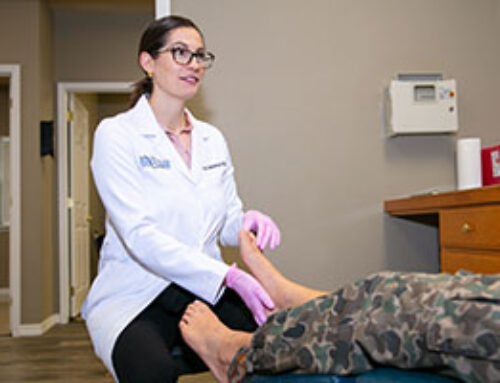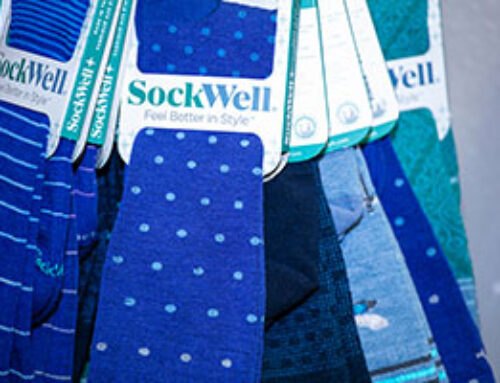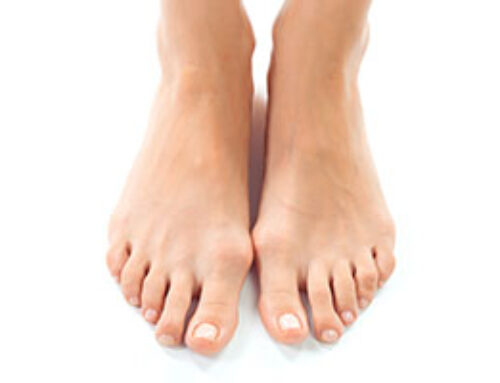When summer heats up, you may want to break out your old flip-flops, but some shoe styles can be hard on your feet, legs, and back. Before you hit the beach, go on a whitewater rafting adventure, or spend a day chilling at the river, take a moment to educate yourself about choosing shoes that will keep your feet healthy throughout the season.
Why it’s important to wear shoes with arch support
Our feet are unique, so the ideal shoe for one person may not be right for someone else. In general, you should wear comfortable shoes that protect your feet and provide solid support.
The arch of a shoe absorbs shock when your foot hits the ground and supports you when you walk or run. Footwear with good arch support helps distribute pressure across the bottom of your foot and reduces the load on the tissues in your foot and ankle.
Proper arch support can also help prevent overpronation (when the foot rolls too far inward toward the arch) or excess supination (when the foot rolls onto the outer edges).
Shoes with inadequate arch support can lead to:
- Plantar fasciitis
- Tendonitis
- Inflammation in the ball of the foot
- Arthritis of the instep
- Hammer Toe
- Bunions
- Knee and hip problems
In addition to arch support, proper fit is essential when you’re buying a new pair of shoes. Good-fitting shoes can help prevent foot pain and future foot problems.
Flip-flops aren’t good for your feet
While flip-flops are easy to slip on and allow your feet to breathe, they’re not the best choice for healthy summer footwear. Flip-flops may be okay for the beach, but never wear them on a sightseeing or shopping excursion or in a situation that requires you to be on your feet all day.
Flip-flops can exacerbate a wide range of foot problems. Most styles lack the structure in the arch that supports the plantar fascia in the bottom of the foot, so wearing them can aggravate plantar fasciitis. Also, when you wear flip-flops you tend to grab the bottom with your toes to keep the shoe on, which can lead to hammer toe or exacerbate a neuroma.
The American Podiatric Medical Association (APMA) offers tips on choosing the right flip-flops:
- Avoid flat, hard flip-flops and instead choose a pair that offers arch support, cushioning in the midsole, and deep heel cups for stability.
- Wear flip-flops or shower sandals when walking around a public pool, in a hotel room, or in a locker room. Walking barefoot can expose your feet to plantar warts and athlete’s foot.
- Don’t wear old flip-flops that are worn out.
- If the skin between your toes where the strap fits becomes irritated, switch to a different type of footwear. Irritation can lead to blisters or an infection.
- To minimize the potential for blisters, choose flip-flops made of high-quality, soft leather. Keep your feet clean and dry, and apply a foot cream before you head out for the day.
- Avoid wearing flip-flops while walking long distances.
- Never wear flip-flops while you mow the lawn or use a weed cutter. Wear closed-toe shoes that fully protect your feet.
- Don’t wear flip-flops while playing sports.
Choose sandals with arch support
Sandals are a great alternative to flip-flops. Look for lightweight, breathable styles that feature a durable insole for shock absorption, a thick sole that offers good traction, and adjustable straps that hold your foot in place. Sandals with proper arch support can help reduce stress on the foot joints and promote a healthy walking gait.
When shopping for sandals, try shoes on toward the end of the day when your feet are true to size due to swelling.
Wear water shoes for outdoor adventures
Water shoes are essential if you plan to do any boating, kayaking, canoeing, or rafting this summer. They can also protect your feet when you hang at the water’s edge or go for a hike. In fact, the best water shoes perform well in and out of water.
In addition to being comfortable and lightweight, water shoes should be easy to get on and off, offer sturdy support, and provide a good grip that keeps your feet safe.
Here are some factors to consider when choosing water shoes:
- Choose a shoe that’s right for the activity (hiking vs. boating) and type of environment (an ocean vs. a river).
- Shoes with laces or straps tend to provide more support than slip-on styles. They also perform better on dry land.
- Look for a water shoe that drains quickly so your feet don’t become waterlogged. Some styles feature mesh materials and built-in drainage holes that help water exit the shoe.
- A sticky grip is essential. If you plan to hike on dry land, choose water shoes with a thick outsole that protects your feet from stones, thorns, and other debris.
Most important, choose a water shoe that’s the right size. Some shoes fit perfectly until you step into the water, at which point they become loose. If water shoes are too big, they might slip off your feet when they get wet.
The best summer shoes for healthy feet
Whatever footwear you wear during the summer—flip-flops, sandals, water shoes, flats, wedges, or athletic sneakers—shoes made with breathable, moisture-resistant materials that support your whole foot are your best option.
Our feet tend to sweat during the summer, so be sure to allow your shoes to fully dry out before you wear them again. Also, wearing different shoes for shorter periods of time can help reduce any negative effects a particular type of footwear has on your body.
If you need help choosing shoes that are right for you, contact Metro Tulsa Foot & Ankle Specialists for an appointment today at one of our five convenient locations. Our experts are here to offer tips and recommendations to help keep your feet healthy all summer long.
Subscribe to stay up-to-date on news and tips from us.




